Strictly speaking, the headline on this week’s blog post should read wildlife instead of wild life. Because for the last few weeks life here has been anything but wild. Instead, the days have passed gently, giving me a very welcome break, with time to read, think and bike around the island, enjoying everything I see.
Birds abound here. Cormorants are everywhere, gathering most mornings for a confab on a nearby golf course …
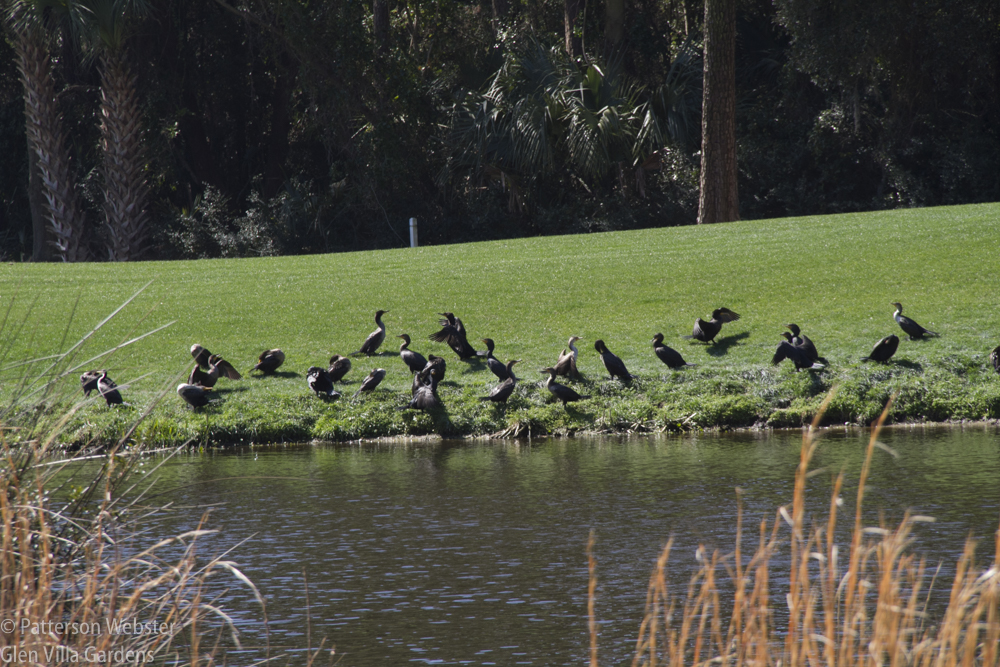
Do you think they are gathering for a caucus? Politics is all people are talking about here in South Carolina, so why not the birds as well?
or swimming in the lakes and ponds …
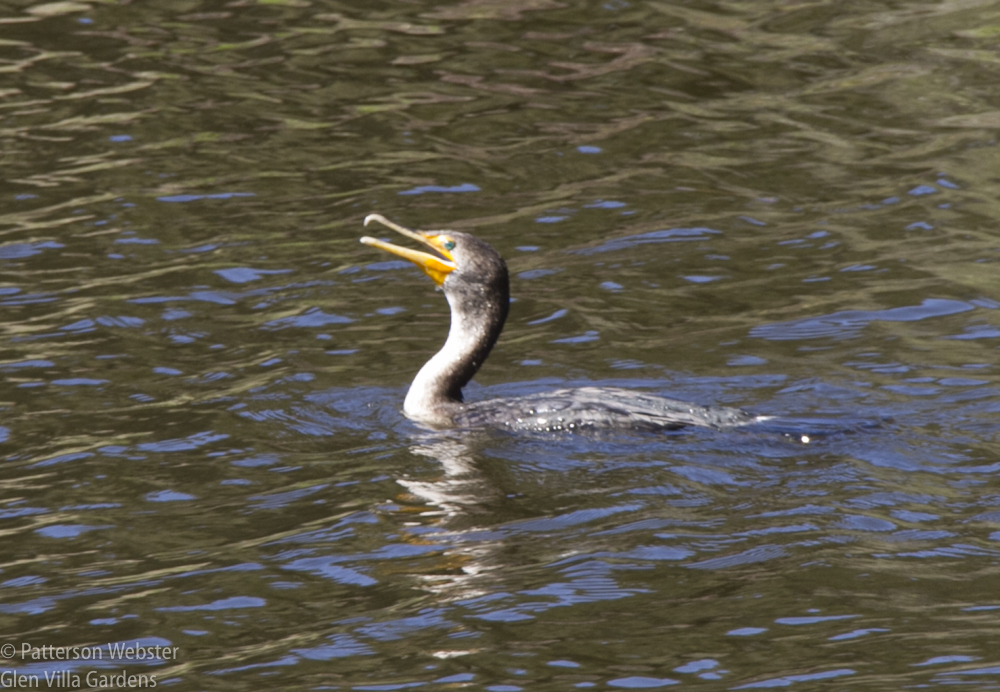
They can’t stop talking, even while they swim.
or landing on a nicely placed branch, ready for a rest.
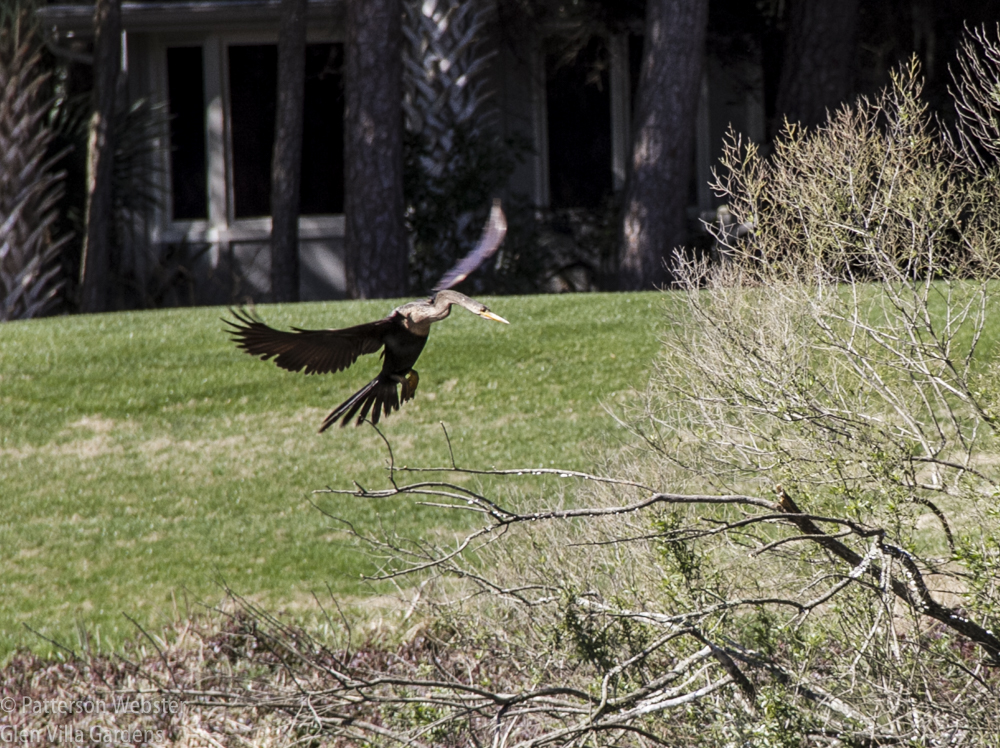
This may be a cormorant but it may be a juvenile anhinga. Both birds spread their wings to the sun, as this one did soon after landing.
Biking and driving around the island, I’ve encountered egrets on branches …
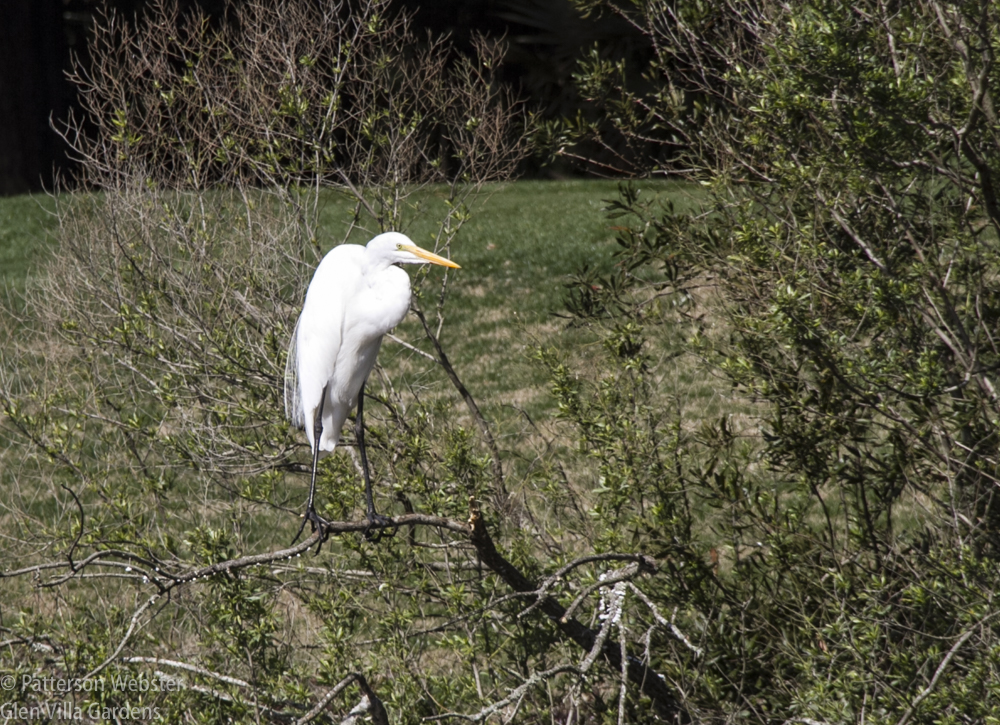
Hunched over, this egret looks small. With neck extended, the birds look much larger and more graceful.
in the water, looking for lunch …
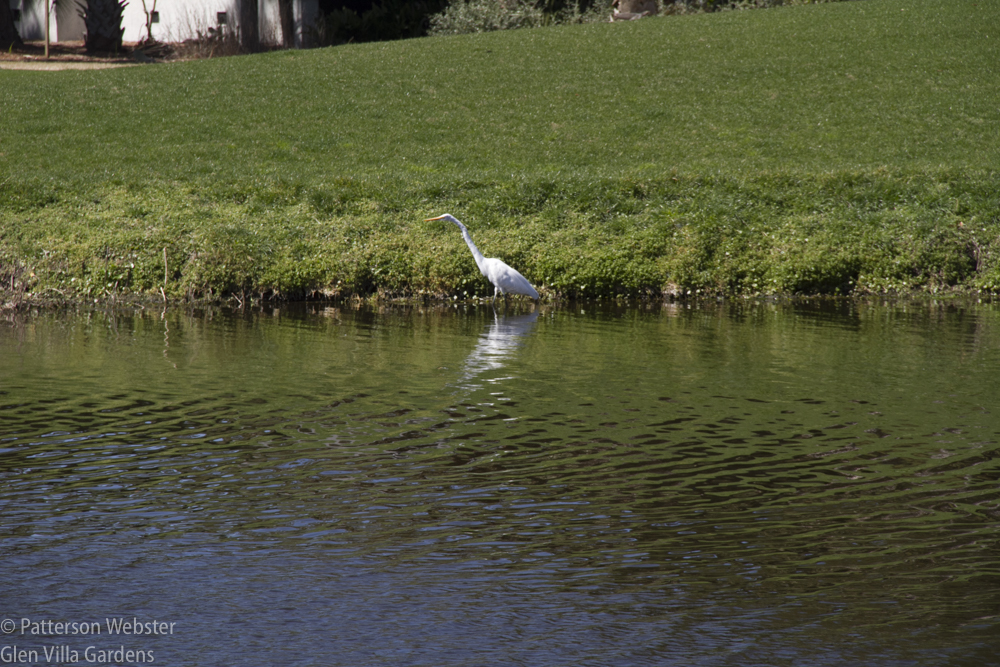
An egret’s neck is really long when fully extended.
And holding up their wings like ballet skirts.
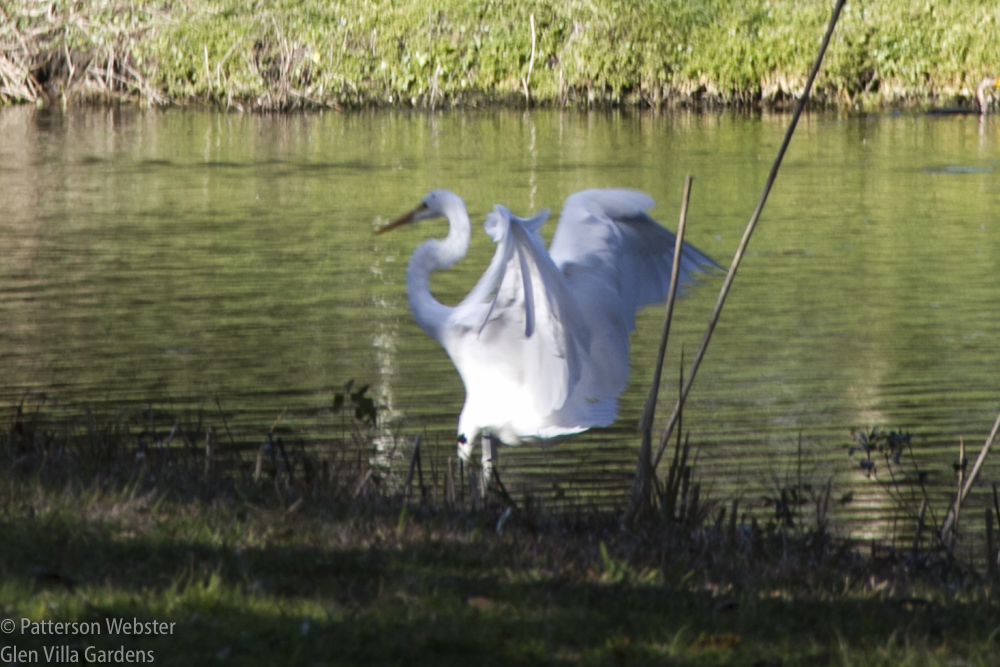
I’m sure there is an explanation for this peculiar posture but I don’t know what it is.
The other day, I saw two pelicans battling it out, chasing each other across a small pond, almost banging wings. Were they fighting or preparing to mate?
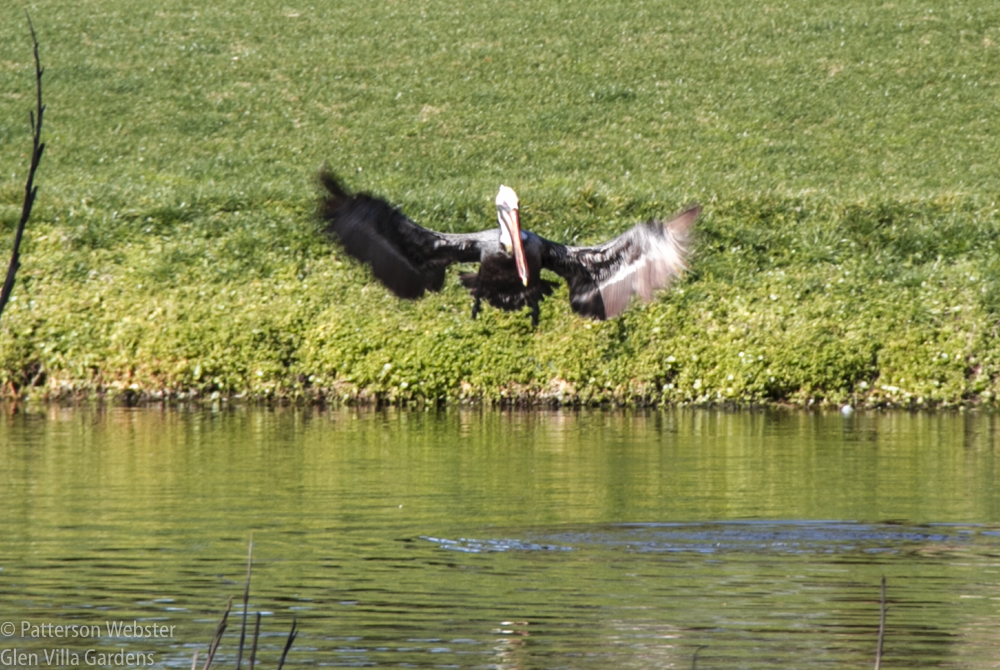
I don’t have any good photos that show both pelicans so this one of one will have to do.
There is other wildlife on the island, including white tailed deer and bobcats, but birds are the real draw for me. I don’t need to see the rare ones, even the most common birds are fascinating to someone like me, for whom they are unfamiliar. Take this one, for example. Perched on one leg, I found the bird menacing.
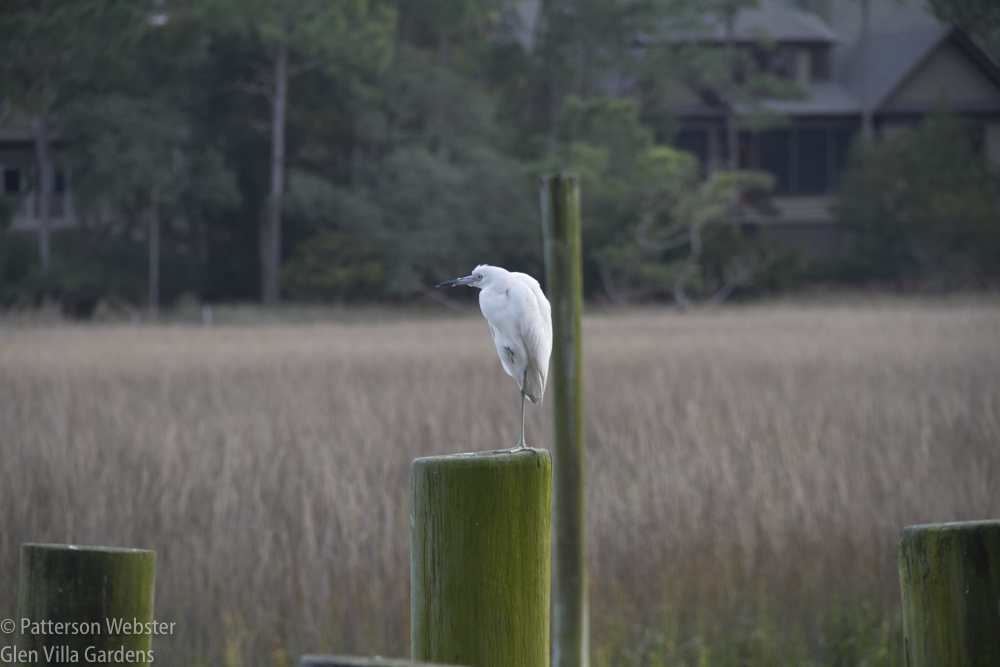
Talk about bad posture!
But once he straightened up, all menace disappeared.
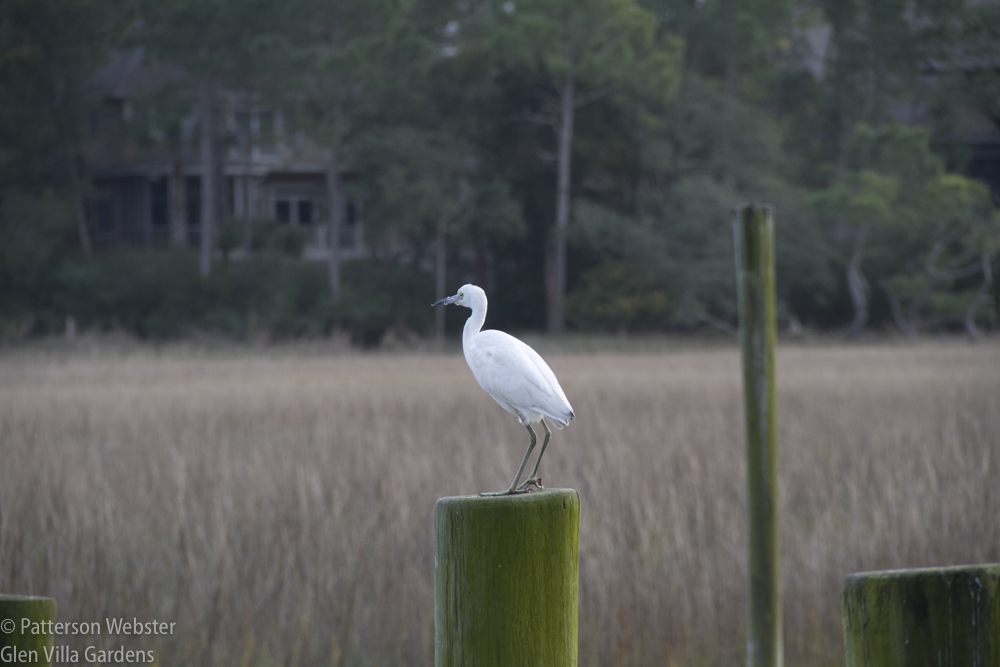
Is this a type of heron? Presumably it is not an egret since they all seem to have yellow feet and bills. But bird identification is not my strong suit.
Today I spotted an osprey on its nest. At first I thought I was seeing the head of a newly hatched chick but when he or she raised its head, I could see it was an adult.
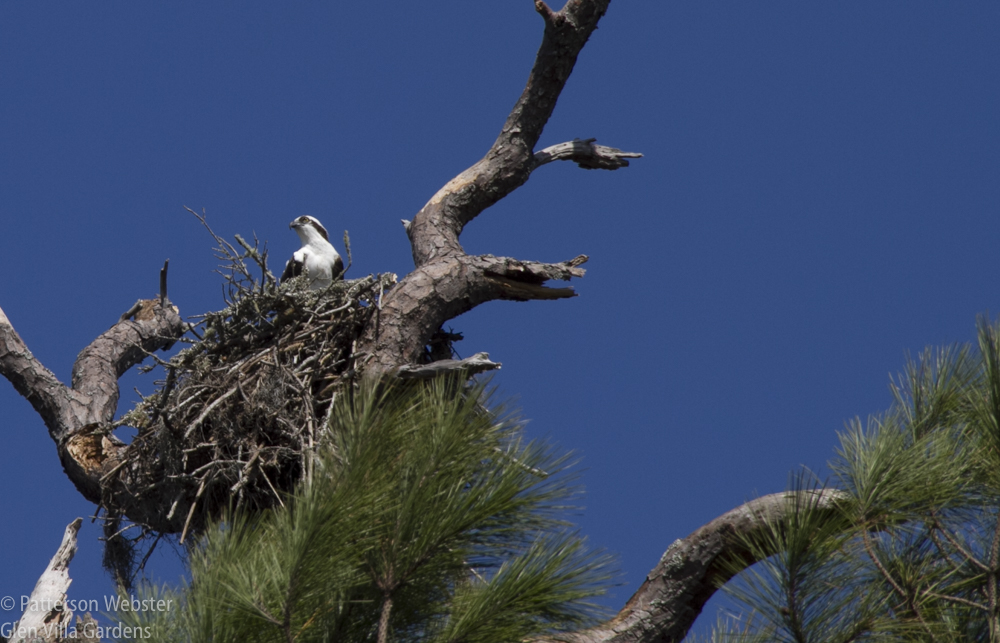
Sitting on its nest, the osprey is only partly visible.
And not a happy one. From time to time the bird called out, changing direction so that the call would reach the absent parent.
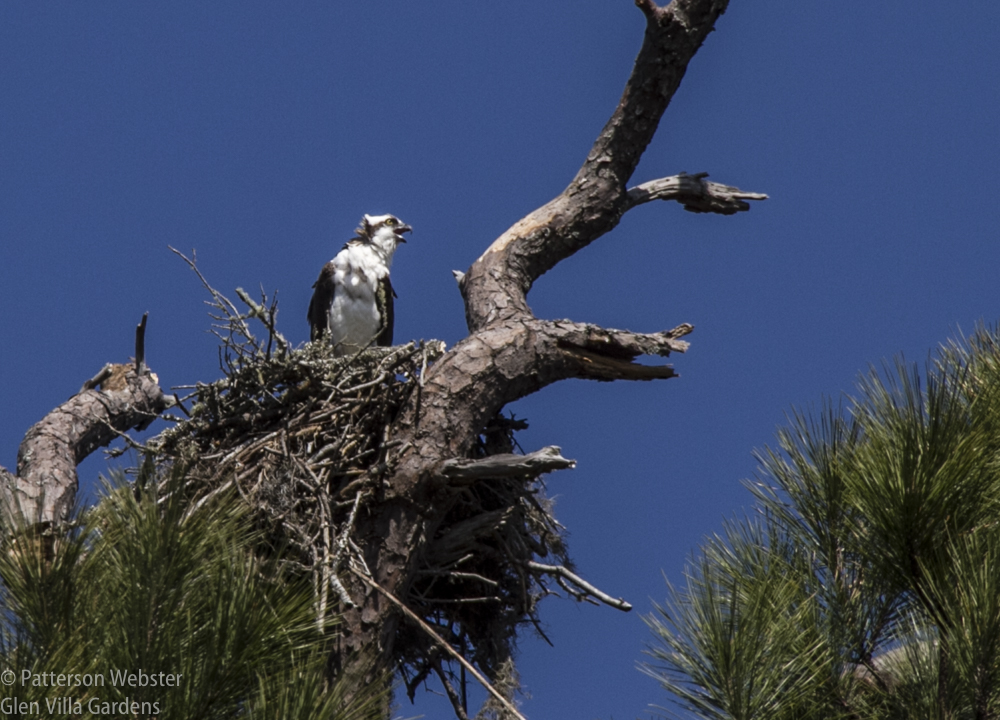
Hey, it’s time to come back. I need some time on my own.
I didn’t wait long enough to see parent #2 returning to the nest. I didn’t need to — sitting in the sun to watch and listen was reward enough.
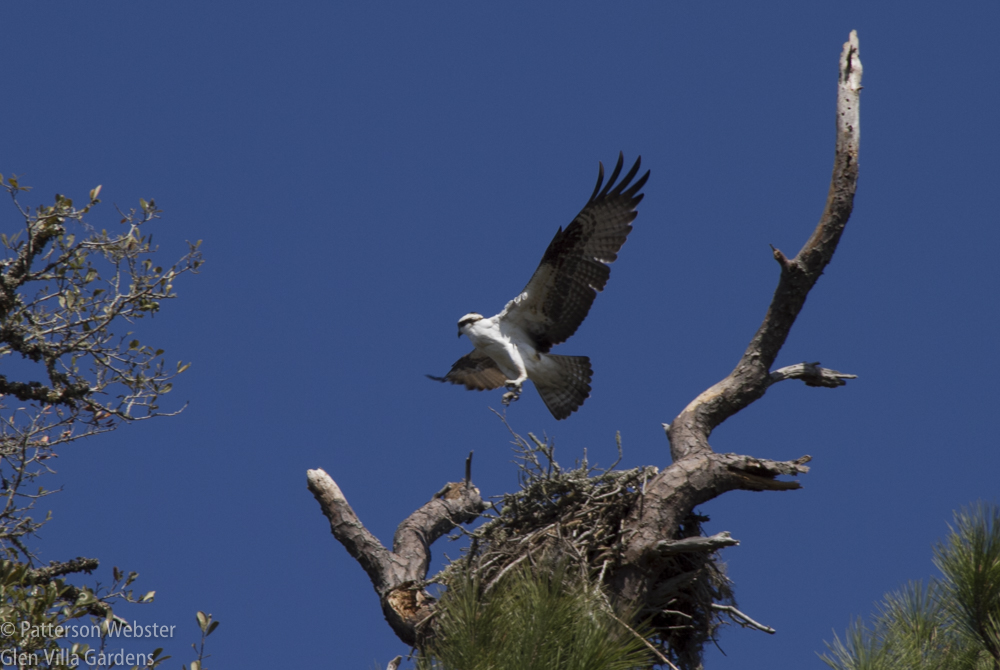
No, not parent #2, only parent #1 changing position.
Along with the abundance of birds is an abundance of signs warning of danger from alligators. I’m sure the danger exists, but the one alligator I see regularly looks like he never moves.
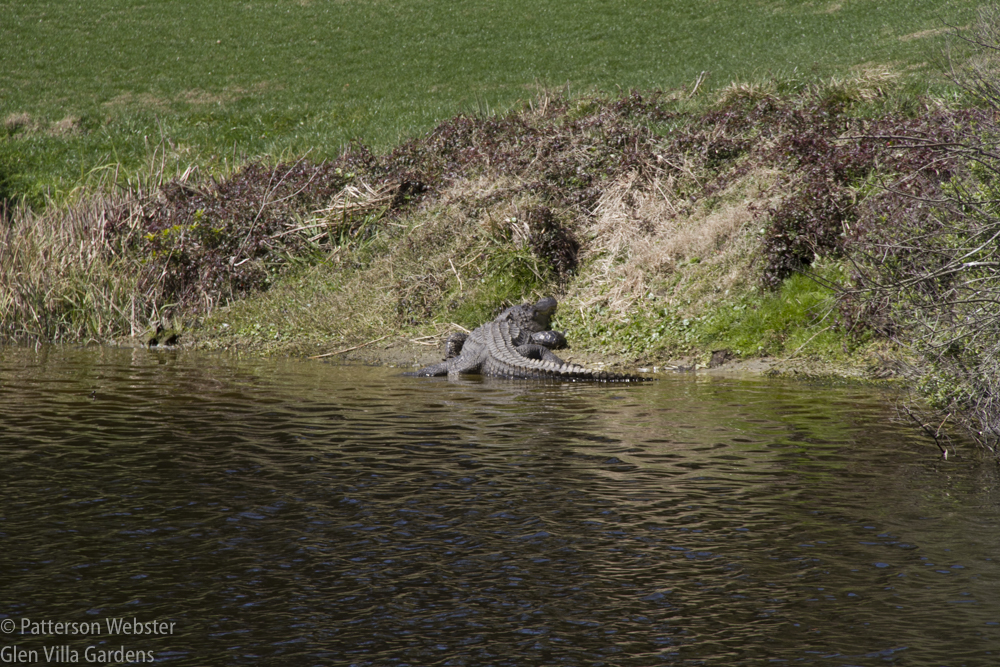
This guy suns himself daily, and always in the same spot and in the same position.
And who blames him? Basking in the sun is good enough for me, too.




Great pictures! Perhaps an update later on whether the pelican gets the mate and is this the longest snooze by an alligator for real?
If I see the pelicans again, I’ll ask. As for the alligator, I’m prompted to prod him to see if he moves but there are potential problems with that…
We really enjoyed the birds in South Carolina. We didn’t get to see an osprey, though. Lucky you!
I agree, I was lucky to spot the nest. I’ve been back several times since but no chicks yet.